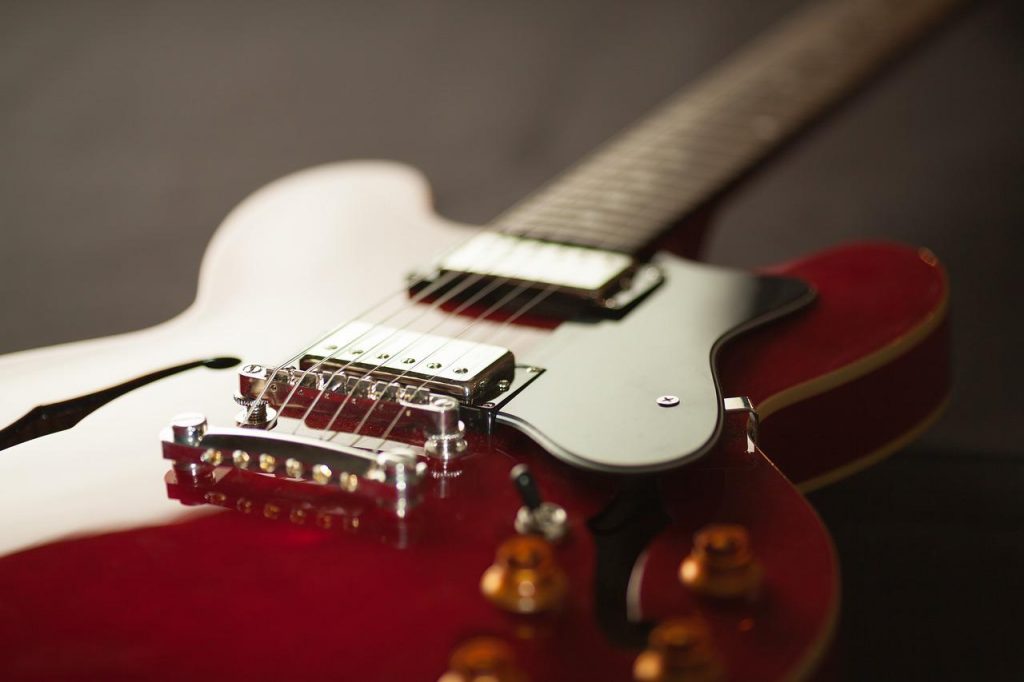Singlecut vs double-cut guitar — which is better? This is a question that often plagues guitarists when they’re trying to purchase their next instrument.
Both single-cut and double-cut guitars have their own unique benefits, and in this article, we’ll break down those benefits to help you make a decision about which type of guitar is right for you.
What Is a Single Cut Guitar?
Every guitar that has a single-cutaway on the lowest bout of the body of the instrument is referred to as a single cut guitar. Single-cut guitars are much less comfortable playing and provide less access to the higher frets, but they offer greater sustain, resonance, and a darker tone than double-cut guitars.
What Is a Double Cut Guitar?
In a double-cut guitar, the thumb and the fingers are able to go past the point where the torso and the neck meet, thanks to double cutaways. Additionally, the strap button on double-cutaway guitars is often placed at the end of the upper horn, which is higher up the neck than the location of the strap button on guitars that do not have a cutaway.
Singlecut vs Double Cut Guitar: Which One Should I Choose?
There are many different body shapes for guitars, and each musician has their own personal choice. Many people prioritize tone above function, which has led to a lot of discussion concerning the relevance and value of guitar body cutaways.
Let’s have a look at the key differences between the single-cut and the double-cut guitars so you can decide which one is best for you.
Singlecut Guitar
A singlecut guitar is far easier to play after having a cutaway installed; however, this modification does include the removal of part of the instrument’s wood, which modifies the guitar’s tone.
The high frets on guitars with a single-cutaway are much easier to reach for the guitarist, but the absence of a cutaway above the neck ensures that these instruments are still difficult to play while the player is seated.
The cutaway makes it possible for the fingers to access the frets, but because there is nowhere for the thumbs to rest, they must either be tucked up underneath the fingers or placed behind the body.
Guitarists who do not frequently play at the extremely high frets but who like to remain below the eleventh fret, where the lack of a cutaway is not even an issue, are the ones who generally look for single-cutaway guitars to purchase.
Pros Of Using a Singlecut Guitar
- A clearer sound is produced by single-cutaway guitars.
- Single cutaway guitars provide a more weighty tone.
- The tone of single-cutaway guitars is fuller and more robust.
- There is a greater amount of sustain on single-cutaway guitars.
Doublecut Guitar
There are many different shapes of guitars that you can acquire, and one of the most essential is the double-cut guitar. Simply said, it is more flexible, lighter overall, and has a far more futuristic appearance in terms of its design aesthetics.
Double-cutaway guitar bodies are much more enjoyable and much more comfortable in the hands than single-cutaway guitar bodies. Single-cutaway guitars are highly useful and produce a heavier, fuller tone and greater sustain than double-cutaway guitar bodies.
For players who spend countless hours playing above the twelfth fret or for guitarists who need easier access to the extremely high frets on the instrument, the double-cut guitar is a good choice. This is because the double-cut guitar has two sets of frets.
A double-cutaway is one that has a cutaway both above and below the neck. This type of cutaway makes it possible for the fingers to access the higher frets while also providing a resting spot for the thumb above the neck.
Pros Of Using a Double-Cut Guitar
- Guitars with double cutaways offer greater flexibility.
- Double cutaway guitars allow players easier access to the higher frets.
- Playing a double-cutaway guitar is a relaxing experience.
- Physically speaking, double-cutaway guitars are not heavy instruments.
Which One Makes The ‘Cut’?
When it comes to singlecut vs double-cut guitars, single-cutaway guitars are best for those who play below the eleventh fret and do not need or want the thumb to have a resting spot on the guitar. On the other hand, if you frequently play above the eleventh fret or want your thumb to have a place to rest, then a double-cutaway guitar is the best choice for you.



